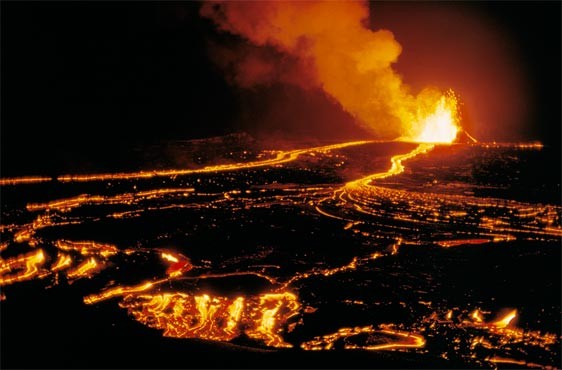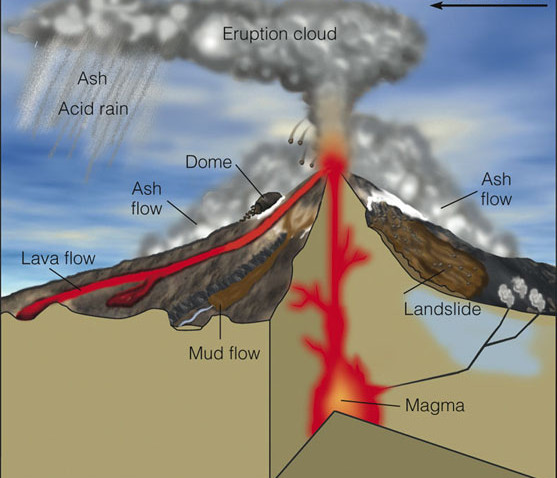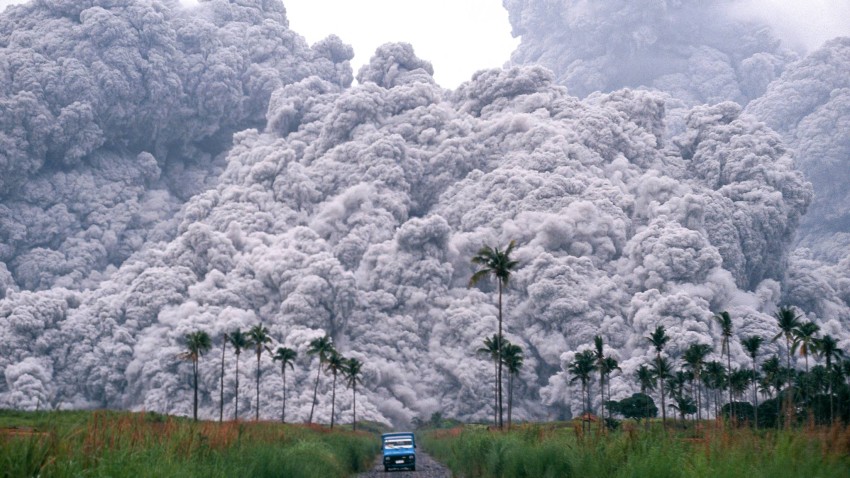What to Expect from a Volcanic Eruption
Most of our experience with volcanoes has to do with watching lava slowly flow from Mt. Kilauea in
Hawaii. While this is a powerful and very active volcano, it hasn't exploded with the destructive and
deadly force that is common from eruptions in other parts of the world. However, there are enough
volcanoes and magma pools in the continental United States to warrant a closer look at the potential
impact of a serious eruption.
Lava is only a small part of the problem, and lava flows present minimal risk to people. The real
dangers stem from things like rocks and burning debris raining down from the sky, mudslides,
earthquakes, toxic gases and ash. An eruption can also impact areas that are far away from the volcano
as well. Winds can carry ash clouds over great distances, and this can impact everything from air and
water quality to blanketing crops or blocking the sun.
The energy that is released from volcanic eruptions is hard to fathom, and even a small one can have
the force of thousands of atomic bombs. Repeated earthquakes tend to precede eruptions, and their
range and magnitude can extend for miles. Fissures can form in the ground that release noxious gases.
Giant explosions of gas, pulverized rock and debris that are produced under great pressure can get
launched into the sky before falling back to the ground. Homes get destroyed, cars get crushed and
people get injured and die all of the time from eruptions, and it can and will happen in the United States
again someday as well.
One of the greatest dangers is the inhalation of dust and toxic, sulfuric gas. Volcanic dust is not
comprised of soft and powdery material. It is full of tiny particles of rock, minerals, forest debris and
countless other items that can shred the lungs and damage the respiratory system. Ash can also
coagulate when wet and form a deadly paste that can fill airways and cause victims to suffocate and
die.
Think of what happened to first responders and countless victims who inhaled the dust and debris
clouds from the collapse of the World Trade Center. People are suffering from a range of life-long
ailments and illnesses that are difficult to treat. The same kind of thing happens when people are
forced to breathe volcanic ash. Ash particles get into everything. They clog machinery, mess up water
supplies and can cause crops to die. A city that is blanketed in ash will grind to a halt for weeks before
a massive cleanup effort starts to show progress.
Consider how transportation and distribution networks can become disrupted and have a knock-on
effect in other parts of the country. Volcanic eruptions present a double-edged risk because of their
immediate impact in the local area and their long-term impact in places far away.
The best way to physically protect yourself from the dangers of a volcanic eruption is to stay as far
away as possible. Get out of the area if an eruption is predicted to occur, and avoid traveling
downwind of where the ash cloud will most likely migrate. Most importantly, get ahead of the curve
and make your move before everyone else starts to realize that something bad is about to happen.
While it is true the most of the country will never experience an eruption, there is a good chance that
we can all be impacted by one in one form or another. Take some time to familiarize yourself with our
volcanoes and magma deposits, see what happened during and after previous eruptions and consider
what might happen in the future. Being prepared for an unlikely event is just as important as being
ready for everything else.







